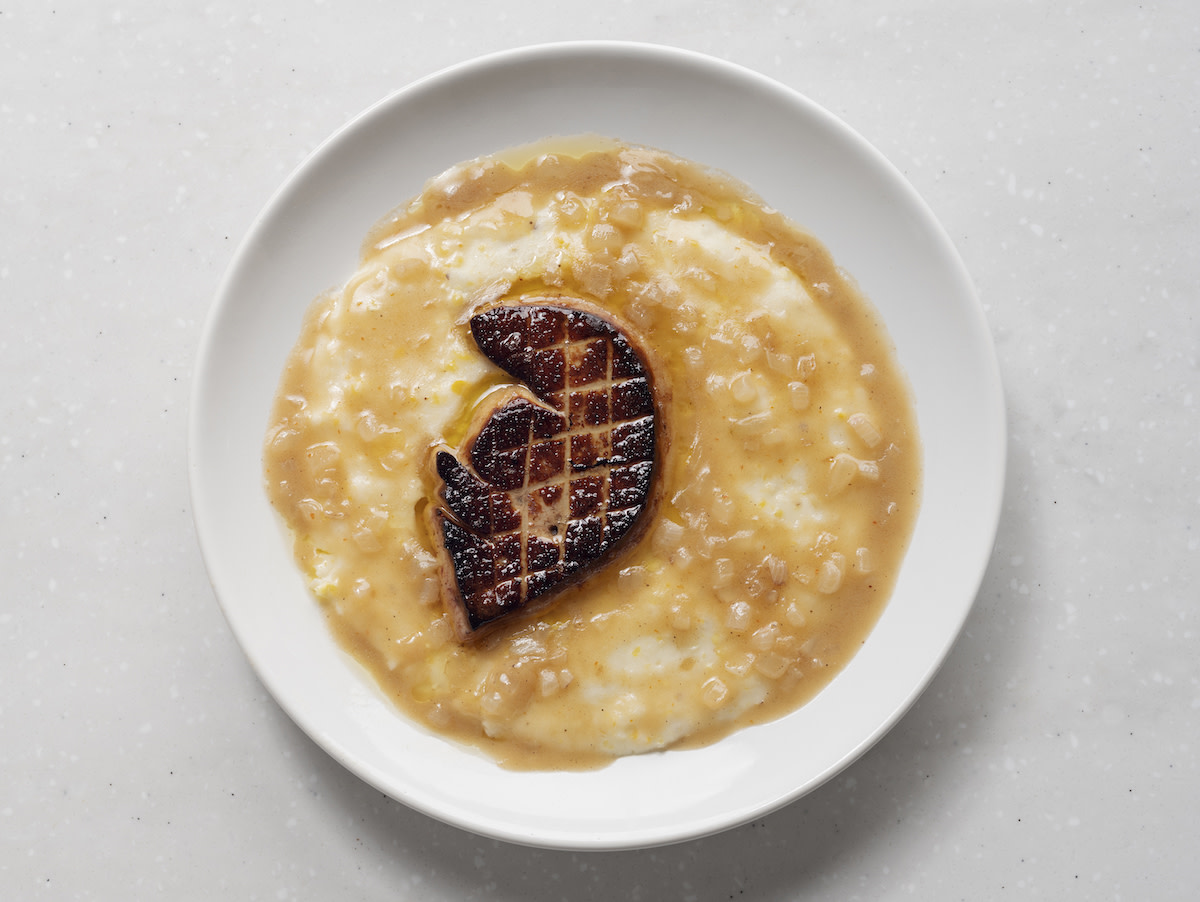Chef Mashama Bailey’s Foie Gras and Grits Recipe
Written by MasterClass
Last updated: Aug 29, 2024 • 4 min read
James Beard Award–winning chef Mashama Bailey provides her recipe for foie gras and grits, inspired by her time spent in France.
Learn From the Best
What Is Foie Gras?
Foie gras (pronounced “fwah grah”) is a delicacy made from fattened duck or goose livers. French for “fat liver,” foie gras comes from force-fed waterfowl, a practice dating back to at least 2500 BC: Ancient Egyptian paintings illustrate humans force-feeding birds. Since producers feed the animals much more than they usually eat, their livers swell to up to ten times their normal size.
Restaurants typically serve the specialty food product seared, in mousse form, or as a pâté. Chefs often use truffles and dark liquors like brandy to flavor the delicacy, which has a buttery or creamy texture. You can purchase foie gras online or from certain specialty stores.
Where Does Foie Gras Come From?
Although foie gras can technically be either duck liver or goose liver, most of the world's foie gras producers raise Muscovy ducks or Moulard ducks (a cross between a Muscovy and a Peking). The distinction between foie gras production and other duck farms is the force-feeding process, sometimes referred to by its French name, “gavage.”
Most foie gras farms feed their animals corn-based feed which they insert into the duck's esophagus through a long metal feeding tube; the process takes seconds. Force-feeding typically happens two to three times a day during a two- to four-week period. After the liver-fattening process, the producers will kill the ducks and process the duck livers.
France is currently the largest producer (and consumer) of foie gras, but Israel, California, and New York have had strong production of foie gras in the past. Foie gras production is currently illegal in California, and in 2019, the New York City Council voted to ban the storing and selling of foie gras in the state. New York state is the home base of two major foie farms that account for 90 percent of domestic foie gras production. The Supreme Court of Israel voted to ban foie gras farming in 2003.
4 Ways to Prepare Foie Gras
Prepare raw, whole foie gras by removing any traces of green gall bladder attached to the liver, then split the two lobes of the liver in half by hand. Cut the lobes lengthwise to remove the veins. From there, four options are common for preparing foie gras:
- 1. Seared foie gras: The easiest way to prepare fresh foie gras is to cut it into thick slices and sear it. When briefly seared in butter, foie gras becomes brown and slightly crispy on the outside and meltingly smooth on the inside. Since the liver is low in collagen, it becomes tender when you cook it briefly but can taste dry when overcooked.
- 2. Foie gras terrine: To make a terrine of foie gras (also known as a pâté de foie gras), press the liver into a mold and gently heat it in a hot water bath to cook. After cooking, cool and slice the terrine.
- 3. Foie gras torchon: A foie gras torchon involves rolling the livers in a towel and poaching them, making them easier to slice into rounds for an appetizer.
- 4. Foie gras mousse: Purée cooked foie gras into a mousse and serve it spread on toasted Brioche.
Chef Mashama Bailey’s Foie and Grits Recipe
makes
prep time
10 mintotal time
1 hr 25 mincook time
1 hr 15 minIngredients
For the foie gras:
For the grits:
- 1
Make the foie gras. Start with cold foie gras just out of the refrigerator. Using a sharp knife warmed under water, portion out the foie gras into 2-ounce pieces. Be sure to remove the veins from each piece.
- 2
Score one side of each foie piece in a grid-like pattern to help concentrate the flavor and even out the heat distribution while searing. Salt each portion.
- 3
Place a nonstick pan over high heat. Make sure your pan is fully heated through, so the sear is fast. Place the foie gras in the pan, scored-side-down, and use your fingers or a spatula to press it down gently. When the foie gras reaches a deep-brown color, remove it from the pan after about 45 seconds to 1 minute and let it rest on a cooling rack. Discard the fat from the pan by pouring it onto a paper towel. Dispose of the paper towel in the trash. After removing the fat, don’t wipe or wash the pan.
- 4
Return the unwashed pan to high heat and add the butter and onions. Stir to coat the onions in the melting butter and foie gras drippings. Add the flour to thicken the mixture, and whisk to combine. Add the chicken stock, and lower the heat. Whisk the mixture, and sprinkle in cayenne to your preferred taste. Whisk to combine, and cook for about 30 minutes, or until the chicken stock reduces. Remove the mixture from the heat once it reaches a gravy consistency. Set it aside for serving.
- 5
Make the grits. In a 4-quart saucepan with a lid, season the water generously with salt and bring it to a boil. Add the heavy cream to the pot, and when the liquid begins to boil (not before), stir in the grits. Reduce the heat and simmer for about 45 minutes. At the 45-minute mark, add the butter to the grits and stir.
- 6
To serve, spoon a serving of grits into a bowl and place the seared foie gras on top. Add a spoonful of pan sauce, and serve immediately.
Become a better chef with the MasterClass Annual Membership. Gain access to exclusive video lessons taught by the world’s best, including Mashama Bailey, Gabriela Cámara, Niki Nakayama, Chef Thomas Keller, Yotam Ottolenghi, Dominique Ansel, Gordon Ramsay, Alice Waters, and more.
